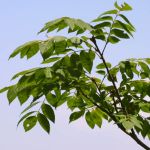| Common Name: |
Kuru |
| Other Names: |
Kutki |
| Botanical Name: |
Picrorhiza kurrooa |
| Genus: |
Picrorhiza |
| Family: |
Scrophulariaceae |
| Native Location: |
Himalayas (Bhutan, India, and Nepal) |
| Cultivation: |
Moist, well-drained soil in sun or partial shade. |
| Propagation: |
By seed sown when ripe; by division of rhizomes in early spring. |
| Harvest: |
Rhizomes are collected in autumn and dried for use in decoctions and tinctures, or ground as powder. |
| Height: |
15-23cm (6-9in) |
| :Width |
30cm (12in) |
| Hardiness: |
Z5-9 |
| Parts Used: |
Rhizomes |
| Properties: |
A very bitter, tonic, laxative herb that lowers fever, improves liver function, increases gastric secretions, expels intestinal parasites, and in larger doses is cathartic and emetic, and stimulates the uterus. Reported to have anti-inflammatory, liver-protecting, and immune stimulating effects, and to be effective against the .organism that causes leishmaniasis. |
| Medicinal Uses: |
Internally for bilious fever, constipation, dyspepsia, jaundice, liver complaints, chronic diarrhea, dysentery, intestinal parasites in children, psoriasis, vitiligo, epilepsy, asthma, and gout; also as an antidote in snakebite and dogbite. Externally for skin diseases, burns, ringworm, scabies, and hemorrhoids. Contraindicated during pregnancy. |
| Bibliography: |
Encylopedia of Herbs by Deni Brown Copyright ©: 1995, 2001 Dorling Kindersley Limited pg 315
|

